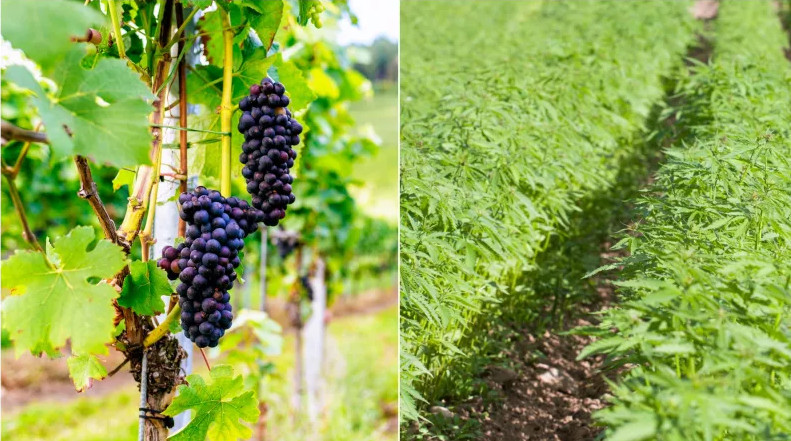Growing marijuana takes a lot of energy, which comes into conflict with state efforts to reduce greenhouse gases. Now, some places are helping the pot industry to become more energy efficient.
Growing marijuana can require a lot of electricity. That’s become an obstacle in states where recreational use is legal, including Colorado, Washington and Oregon. Those places have ambitious goals to reduce greenhouse gas emissions. And as Grace Hood from Colorado Public Radio reports, the thriving marijuana industry is getting in the way.
GRACE HOOD, BYLINE: It’s not the first place you’d pick to grow plants. Cramped, windowless rooms inside the Colorado Harvest Company hum with air conditioning and artificial lights. But most pot growing facilities in Denver, called marijuana grows, look like this. Early Denver regulations put most growers indoors. CEO Tim Cullen says he’s tested out all kinds of lights over the years.
TIM CULLEN: Plasma lights, induction lights, LED lights.
HOOD: LEDs have replaced traditional bulbs in homes, streetlights and headlamps on cars but not for indoor agriculture.
CULLEN: Really anyone who will give us a light to test out, we’ll test it out.
HOOD: Cullen approaches a new LED test area with small marijuana plants. He says technology has changed so dramatically he’ll replace some fluorescent lights with LEDs that are twice as efficient. It’s a big deal for Cullen, who pays a whopping $13,000 a month for electricity.
CULLEN: For the first time in four years, I’m looking forward to that bill going down a little bit. And I bet it drops several thousand dollars a month.
HOOD: It’s a win for Colorado Harvest Company. It’s also a win for Denver. The city started tracking pot industry energy use years ago when it found marijuana grows accounted for nearly half of Denver’s 1 percent uptick in electricity use. Emily Backus at Denver’s Department of Environmental Health says that causes friction with the city’s carbon reduction plan. The goal is to be down 80 percent by 2050.
EMILY BACKUS: It raised a lot of eyebrows and it helped us, you know, push forward and say we need to keep working on this.
HOOD: To reduce energy use, the city started a task force that looks at pot and power. It’s recommended LEDs, which last longer and are more efficient. But each unit can cost hundreds, sometimes more than $1,000. In some places like Washington state, utilities offer generous rebates to any business that changes to LEDs, including pot growers.
DAVE MONTGOMERY: It’s cheaper for us to provide incentives to reduce energy usage at our customers than it is for us to put in new power plants.
HOOD: Dave Montgomery works with Puget Sound Energy, a utility in the Seattle area. Their LED rebates cover up to 70 percent of new lighting costs. Compare that to Xcel Energy in Colorado. It covers up to 40 percent of a new LED lighting project. Montgomery says there’s a growing interest.
MONTGOMERY: We continue to see a steady stream of customers coming online and approaching us for energy efficiency incentives.
HOOD: The Energy Trust of Oregon, an efficiency arm of several utilities there, is also seeing an uptick. It expects light rebates for marijuana grows to double this year. Industry consultant Jacob Policzer says marijuana growers are faced with shrinking margins. As recreational pot prices plummet, a lot more growers are revisiting energy costs.
JACOB POLICZER: We’re going to see with market pressures that, you know, indoor grows is kind of going to – I wouldn’t necessarily say dying out but it’s going to change dramatically.
HOOD: California has a lot of outdoor marijuana grows and greenhouses. Those less-energy-intense operations are gaining popularity in parts of Colorado. In 5 or 10 years, the future of marijuana could look a whole lot more like traditional agriculture. For NPR News, I’m Grace Hood in Denver.
credit:npr.org










